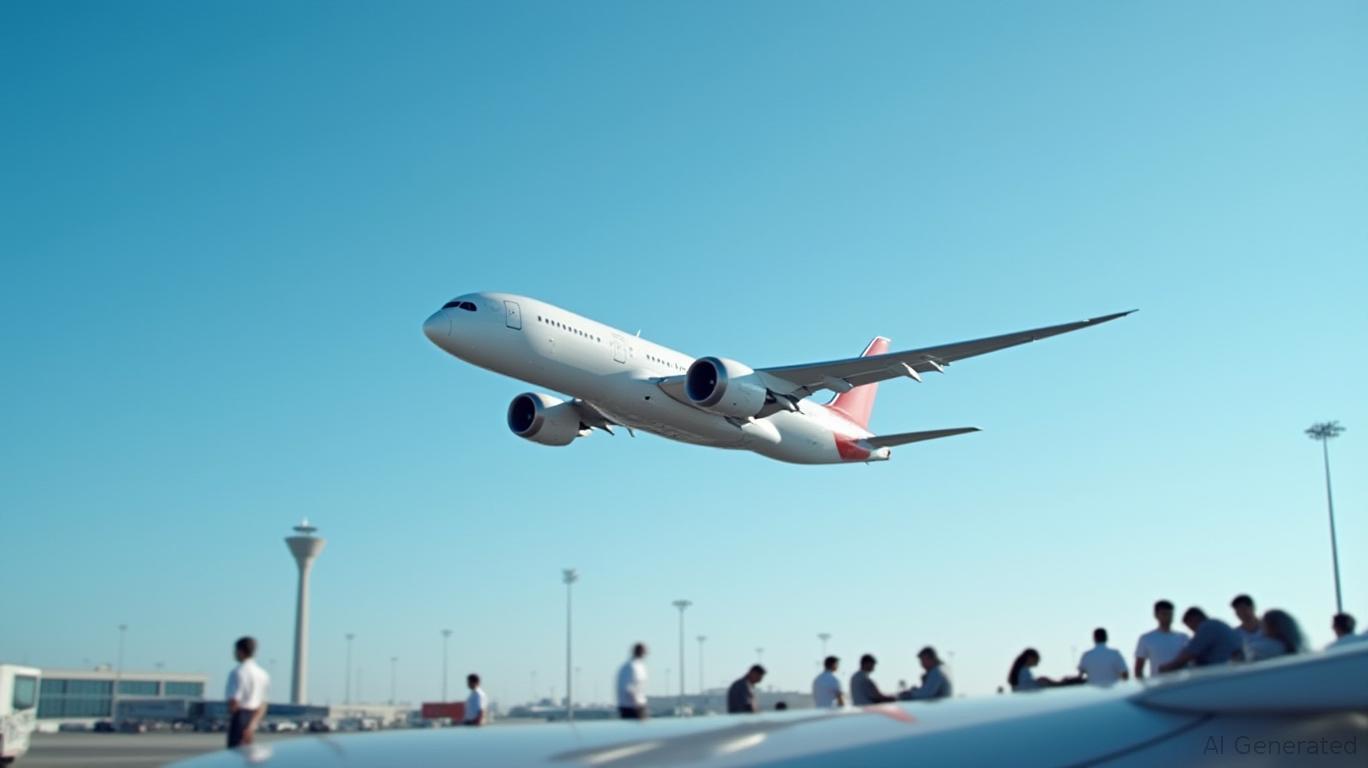U.S. Aviation Sector: Navigating Tariff Reforms and Infrastructure Funding for Growth
The U.S. aviation sector is at a pivotal juncture, shaped by shifting trade policies and infrastructure challenges. As tariffs reshape global supply chains and infrastructure funding struggles to keep pace with demand, investors must parse the risks and opportunities for aerospace manufacturers, airlines, and infrastructure players. Let's dissect the landscape.
Tariff Reforms: A Double-Edged Sword
The Trump administration's April 2025 decision to end duty-free status for aircraft imports has sent shockwaves through the industry. A baseline 10% tariff now applies globally, while country-specific levies—like the EU's previously 20% tariff—were temporarily suspended until July 2025. This has raised costs for airlines importing foreign-made aircraft and manufacturers relying on imported parts.
Key Impact:
- Airlines face higher operational expenses as tariffs on aircraft imports add to their bottom line.
-

Meanwhile, the EU's Section 232 investigation into U.S. aircraft imports (launched May 2025) looms as a risk. If retaliatory tariffs materialize, U.S. exports could face 20-50% levies, complicating Boeing's global strategy.
Infrastructure Funding: A Lifeline or a Liability?
The aviation sector's infrastructure is aging, and funding gaps are widening. The FAA's NextGen air traffic system, designed to modernize operations, remains years behind schedule. The Airport Improvement Program (AIP), which funds runways and terminals, has been stuck at $3.35 billion since 2011—far below the $237 billion 10-year funding shortfall projected pre-pandemic.
Critical Leverage:
- Passenger Facility Charge (PFC): Capped at $4.50 per passenger since 2000, the PFC generates $3.6 billion annually but can't keep up with needs. Raising or removing the cap—a top recommendation from the American Society of Civil Engineers (ASCE)—could unlock billions for terminal upgrades and cybersecurity.
- Infrastructure Investment and Jobs Act (IIJA): The $5 billion Airport Terminal Program (ATP) aims to modernize aging facilities, with $1 billion allocated annually through 2026.
Boeing's stock (BA) has fluctuated amid trade wars and pandemic recovery. A resolution on tariffs and infrastructure funding could stabilize or boost its trajectory.
Investment Implications: Where to Play?
1. Aerospace Manufacturers
Boeing (BA) is a central player. While near-term risks include EU tariffs and China's limited orders, the U.S.-UK trade deal—which exempts Rolls-Royce engines from tariffs—provides a tailwind. Investors should monitor Boeing's backlog and trade negotiations. Airbus (AIR) faces similar pressures but benefits from a weaker dollar and EU-U.S. trade dynamics.
2. Airlines
Airlines like Delta (DAL) and United (UAL) face margin pressure from rising fuel and operational costs. However, infrastructure upgrades under the IIJA could reduce delays and improve efficiency, indirectly supporting profitability.
3. Infrastructure Plays
- Airports: Privately held airports like Hartsfield-Jackson (ATL) or publicly traded infrastructure funds may benefit from PFC reforms and ATP grants.
- Caterpillar (CAT): Supplies construction equipment for terminal and runway projects, tying it to infrastructure spending.
Risks to Consider
- EU Tariffs: If implemented, they could slash U.S. aircraft exports, hitting Boeing hardest.
- PFC Stagnation: Without cap reform, airports will struggle to fund safety upgrades, risking FAA penalties.
Final Take: Navigate with Caution, but Invest
The aviation sector is a tale of two challenges: near-term tariff-driven headwinds and long-term infrastructure-driven growth. Investors should:
1. Buy Boeing (BA) dips if EU tariffs are delayed and China orders rebound.
2. Look to airports and infrastructure via ETFs like the Global X U.S. Infrastructure Development ETF (PAV).
3. Avoid overexposure to airlines unless fuel prices stabilize and capacity improves.
The PFC cap's stagnation (at $4.50 since 2000) limits airport funding. A cap increase could unlock $10 billion+ annually.
The sector's future hinges on policymakers lifting the PFC cap and resolving trade disputes. For now, focus on manufacturers with diversified export markets and infrastructure assets poised for federal support. The runway to recovery is long, but the destination is clear.
Recommendation: Overweight aerospace manufacturers with balanced geographic exposure; underweight airlines until cost pressures ease.

Comments
No comments yet